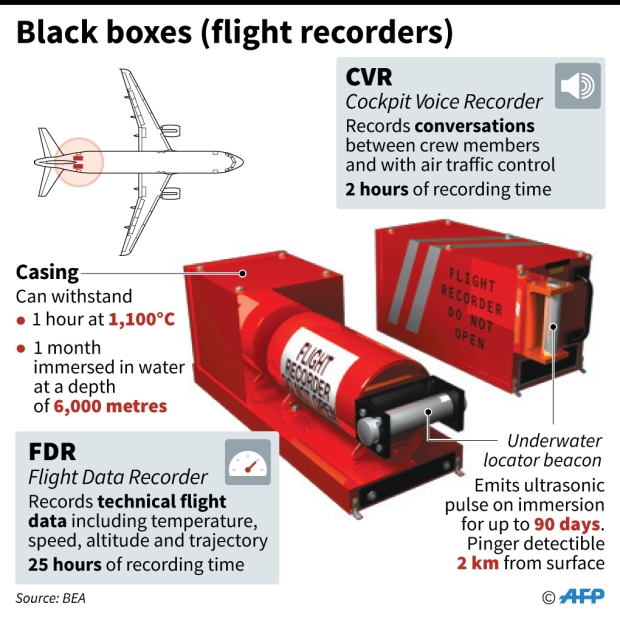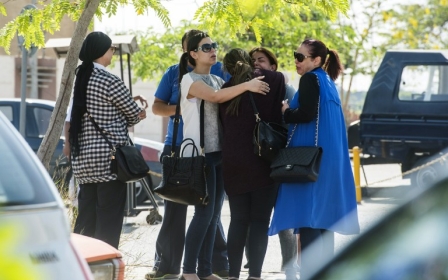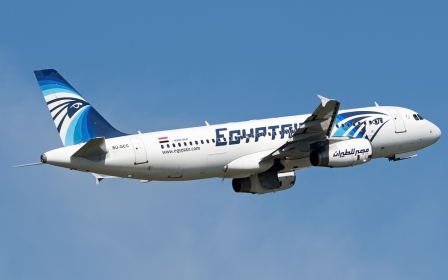Investigators focus on hunt for EgyptAir flight's black box

The discovery of wreckage from EgyptAir flight MS804 will see attention turn to the search for the aircraft’s black box and to speculation over unaccounted minutes between the plane’s final communication with air traffic control and its disappearance from radar.
On Thursday, Greek air traffic controllers said they had normal communication with the MS804 pilot as the Airbus A320 passed through the country’s air traffic control zone at 02:48 local time.
Forty minutes later, however, repeated calls to the aircraft went unanswered, and two minutes and 40 seconds later radar contact was lost with the plane.
At around this time, shortly after entering Egypt's air control zone, the plane made a series of “sudden swerves” and dropped from 37,000 feet to 15,000 feet, according to Greek Defence Minister Panos Kammenos.
The span of missing minutes was earlier reported as lasting more than 10 minutes, prompting intense speculation that the disaster may have been caused by “human interference” in the cockpit.
Mike Vivian, former head of operations at the UK Civil Aviation Authority, told the BBC: “It looks highly unlikely that this was consistent with some sort of explosive device. One’s inclined to go towards the theory that there has been some interference in the aircraft and on the flight deck, with the control of aircraft."
However, former air accident investigator Tony Cable, who investigated the 1988 Lockerbie bombing, told Middle East Eye that he would be “cautious” about jumping to conclusions.
He said: “The swerves and lack of distress messages don’t mean you can draw the conclusion there was interference [in the cockpit] or a hijack.
"If the pilots were experiencing some kind of control or technical difficulty, it would not be unusual for them to attempt to correct it before making radio contact. That could easily take 10 minutes or more depending on the situation they faced. The procedure in a crisis is to aviate your way to safety, navigate to make sure you are not flying towards a mountain or something and then communicate with the ground.”
On Friday, British and French air accident officials joined the investigation, while a British Royal Air Force C-130 aircraft and a Royal Navy auxiliary vessel joined the recovery operation.
The recovery of the aircraft’s black box - or flight data recorder which captures audio from the cockpit and data from the aircraft - will be a top priority, after the head of Greece’s air accident investigation body told reporters that an investigation into the crash could only begin properly when the black box is found.
Athanasios Binis, who had earlier dismissed initial media reports that debris had been discovered off the island of Crete, said: “If the cockpit flight recorder and flight data recorder are found, along with wreckage, then a real investigation can begin.”
Finding the black box will be vital if the investigators are to shed light on the missing minutes and “sudden swerves” and avoid the limbo that followed the 2014 crash of Malaysian Airlines MH370. That aircraft's black box remains missing, despite a costly international search operation in the south Indian Ocean.
Binis added that whatever the causes of the crash, investigators would likely rule out weather conditions.
“There are three reasons for a plane [to go down]. Meteorological, technical and human. The first has now been ruled out because the weather was quite good. Whether a technical factor or human factor, either inside or outside the plane, is to blame remains to be seen. All possibilities are open," he said.
Black boxes give off ultrasonic signals, known as “pings” for around a month after a crash, but it took two years and a major rescue effort to locate the black box after Air France flight 477 crashed in the south Atlantic in 2009.
Searchers will be hoping for a speedier resolution to this investigation however the area of the Mediterranean in which the plane is thought to have crashed is not shallow, with the ocean floor being up to 3,009m down.
Meanwhile, Egyptian authorities were investigating reports late Friday that there was smoke on the doomed EgyptAir flight from Paris to Cairo shortly before it crashed into the Mediterranean.
"We are looking into this report," an Egyptian civil aviation ministry official told AFP. "At this point I can't deny or confirm it."
The Wall Street Journal, citing people familiar with the matter, said automated warning messages indicated smoke in the nose of the aircraft and an apparent problem with the flight control system.
The warnings, which were automatically sent by the Airbus A320's computer systems, came about 2:26am on Thursday local time, just before air traffic controllers lost contact with the plane carrying 66 people, the Journal said.
The messages indicated intense smoke in the front portion of the plane, specifically the lavatory and the equipment compartment beneath the cockpit. The error warnings also indicated that the flight control computer malfunctioned, the report said.
CNN also reported smoke alerts on the flight minutes before it crashed, citing information it obtained from an Egyptian source that was filed through the Aircraft Communications Addressing and Reporting System, which sends messages between planes and ground facilities.
AFP contributed to this report.
New MEE newsletter: Jerusalem Dispatch
Sign up to get the latest insights and analysis on Israel-Palestine, alongside Turkey Unpacked and other MEE newsletters
Middle East Eye delivers independent and unrivalled coverage and analysis of the Middle East, North Africa and beyond. To learn more about republishing this content and the associated fees, please fill out this form. More about MEE can be found here.





